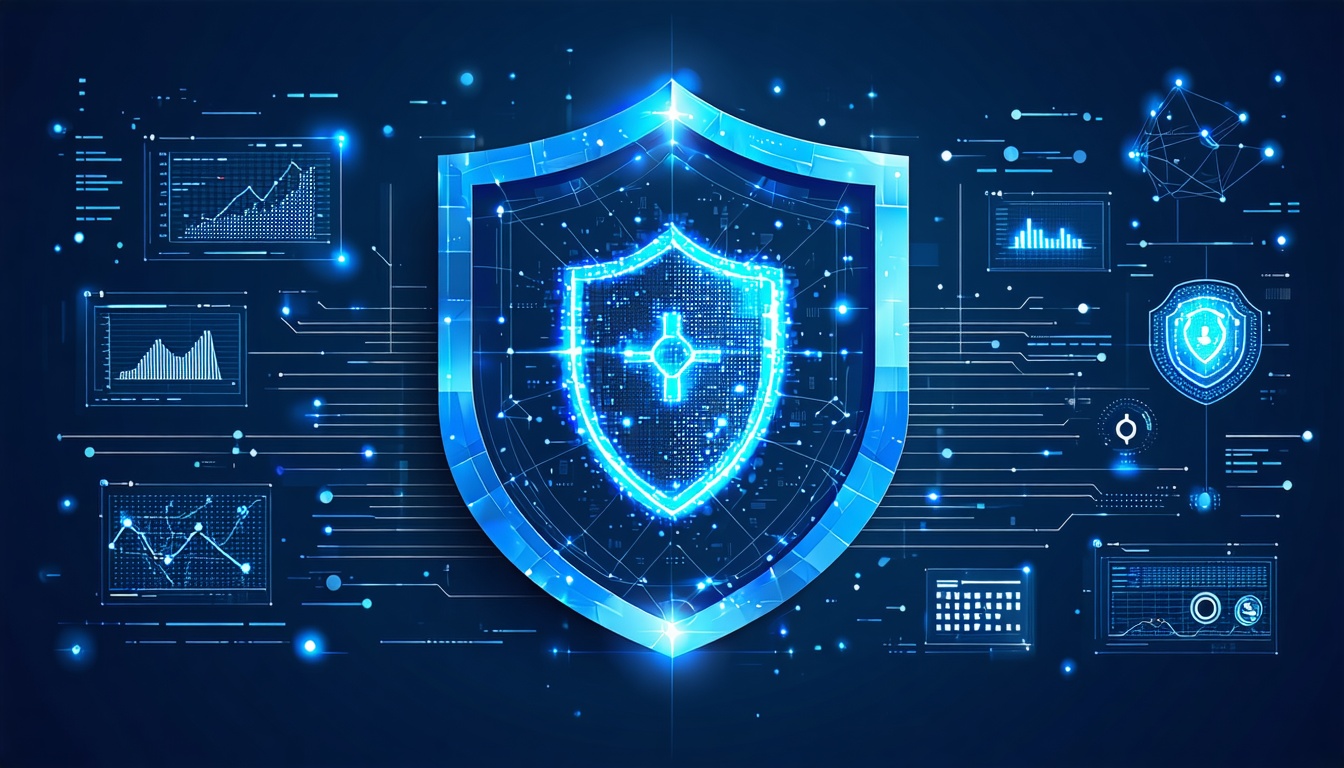Endpoint Security Landscape
In an environment shaped by remote work and advancing cyber threats, protecting endpoints has become a strategic imperative for organizations. Endpoints—including laptops, servers, mobile devices, and IoT assets—represent primary vectors for intrusion. Without robust controls at these perimeters, malicious actors can exploit vulnerabilities to launch ransomware campaigns, exfiltrate data, or disrupt critical operations. That’s why endpoint detection and response solutions have evolved beyond traditional antivirus to deliver continuous visibility and automated remediation.
Evolving Threat Environment
Modern adversaries leverage sophisticated tactics such as fileless malware, zero-day exploits, and polymorphic campaigns. As endpoints multiply, maintaining a comprehensive view of device activity becomes challenging. Conventional defenses often fail to detect stealthy intrusions, leaving security teams with blind spots that can extend attacker dwell time.
Role of Detection and Response
Endpoint detection and response platforms capture telemetry from device processes, network connections, and system logs to identify anomalous behavior. While endpoint protection platforms emphasize signature-based prevention, EDR frameworks deliver deeper visibility and response capabilities; a detailed comparison can be found in edr vs epp. These insights allow security teams to investigate potential incidents and implement containment measures swiftly. For foundational definitions on these approaches, organizations may review guidelines on endpoint detection and response.
Rise of Remote Work
The proliferation of Bring Your Own Device (BYOD) policies and remote work has expanded the attack surface. Unsecured Wi-Fi networks, home routers, and unmanaged devices increase vulnerability to phishing, ransomware, and data theft. In such scenarios, 24/7 endpoint monitoring becomes critical to detect threats that might bypass perimeter defenses (SentinelOne).
Understanding Managed EDR
Managed endpoint detection and response is a service model that extends core EDR capabilities with expert oversight. It combines real-time monitoring, threat hunting, and incident response delivered by specialized teams or security operations centers. That model shifts operational burden away from in-house staff, enabling organizations to maintain rigorous protections without staffing large security teams.
Core Functional Components
Managed EDR services generally include:
- Continuous telemetry collection from all endpoints
- Machine learning algorithms for behavioral analysis
- Expert-led threat hunting and incident investigation
- Automated and manual response actions to contain threats
- Detailed reporting and forensic data retention in an EDR database
Comparison to Traditional EDR
When exploring protection options beyond legacy antivirus, organizations may review solution comparisons such as endpoint detection and response vs antivirus or evaluate broader platforms in an edr vs xdr context. A direct comparison highlights how managed services enhance foundational EDR tools:
Use Cases and Scenarios
Organizations may consider managed EDR in scenarios such as:
- Small and medium sized operations seeking specialist support, for more detail see edr for small business
- Environments with high regulatory demands requiring comprehensive audit trails
- Teams lacking advanced threat hunting or incident response expertise
- Hybrid infrastructures integrating on-premises and cloud endpoints
Mitigating Security Challenges
Transitioning to a managed detection and response model addresses key vulnerabilities inherent to decentralized networks. From continuous monitoring to compliance support, such solutions fill gaps left by traditional controls.
Continuous Monitoring and Alerts
Security operations centers can receive between 24,000 and 134,000 alerts daily, yet only about 0.01 percent correspond to genuine attacks. The overwhelming volume of false positives often leads to fatigue and missed detections. Managed EDR platforms incorporate precision tuning and contextual filtering to reduce noise, ensuring that critical alerts receive prompt attention (Radiant Security).
Behavioral Analysis and Hunting
By leveraging behavioral analytics, machine learning, and expert-led threat hunts, managed EDR services proactively uncover stealthy threats. In this scenario, anomalies such as unusual process launches or lateral movement trigger hunts that can preempt attacks before significant damage occurs (Huntress).
Compliance and Regulatory Support
Industries subject to GDPR, HIPAA, PCI-DSS, or other frameworks benefit from the detailed reporting capabilities of managed EDR. Providers deliver forensic insights that demonstrate adherence to security controls, streamline audit processes, and offer evidence for regulatory reviews (Huntress, WebFactory Ltd).
Implementing Managed EDR
Deploying a managed detection and response solution requires strategic planning across technology, process, and people dimensions. From integrating with existing platforms to securing stakeholder buy-in, a structured approach ensures a smooth transition.
Integration With Existing Systems
Organizations often operate a mix of legacy servers, cloud applications, and diverse endpoint agents. Effective integration demands a tailored plan that reconciles data formats, ensures compatibility with existing security information and event management platforms, and addresses connector gaps. For more on aligning EDR with SIEM frameworks, see siem vs edr.
Phased Deployment Strategy
A gradual rollout—beginning with pilot testing on select endpoint groups—allows for iterative refinement of detection rules and response playbooks. From there, a staged expansion reduces operational risk and incorporates lessons learned into subsequent phases (Radiant Security).
Managing Change and Adoption
Change management is crucial to ensure that end users and IT teams embrace new workflows. Clear communication, targeted training, and the establishment of internal champions help mitigate resistance and align stakeholders around security objectives (WebFactory Ltd).
Evaluating Service Models
Organizations evaluating managed EDR may consider fully outsourced, co-managed, or hybrid models. A fully outsourced model transfers operational tasks to the provider, while co-managed engagements combine internal analysts with external expertise. Hybrid frameworks often retain core detection responsibilities in-house but leverage service providers for threat hunting and advanced investigations. Key decision criteria include:
- Level of in-house expertise and staffing
- Desired speed and scope of threat response
- Budget and licensing preferences
- Integration complexity with existing IT ecosystems
Cost-Benefit Considerations
While managed EDR entails subscription fees, organizations can offset these costs through reduced breach expenses, faster incident containment, and optimized resource allocation. According to the IBM 2024 Cost of a Data Breach Report, the global average breach cost reached $4.88 million in 2024, a 10 percent year-over-year increase that underscores the financial stakes of robust endpoint defenses (Palo Alto Networks). That’s why a thorough return-on-investment analysis should account for both direct savings and intangible benefits such as brand reputation protection.
Measuring Impact and Value
Quantitative metrics and qualitative insights jointly drive informed security investment decisions. Establishing clear measurement frameworks from the outset enables ongoing validation of managed EDR effectiveness.
Key Performance Metrics
Essential indicators include:
- Mean Time To Detect (MTTD)
- Mean Time To Respond (MTTR)
- Number of confirmed incidents vs total alerts
- Dwell time from breach to remediation
For example, a target MTTD of under 15 minutes can dramatically shorten attacker dwell time and limit potential damage.
Operational Efficiency Gains
Managed services free internal teams from routine monitoring, allowing specialists to focus on strategic initiatives. In practical terms, teams often report redeploying up to 20 percent of security budgets toward proactive threat hunting once routine alerts are outsourced and fine-tuned.
Return on Security Investment
Rapid containment and automated response directly reduce financial impact. Effective management of endpoint detection can cut breach impact costs by significant margins in the first year of operation. Demonstrable ROI not only secures executive support but also reinforces the value of continuous security improvements.
Sustaining Endpoint Security
Maintaining a resilient endpoint environment requires ongoing evaluation and adaptation. That ensures defenses evolve in concert with emerging threats and business growth.
Continuous Optimization and Tuning
Regular reviews of detection rules, response playbooks, and alert thresholds are necessary to minimize false positives and adapt to changing patterns. Providers often perform quarterly or biannual tuning to align with new threat intelligence.
Preparing for Emerging Threats
As adversaries adopt AI-driven tactics and exploit supply chain vulnerabilities, endpoint defenses must keep pace. Organizations may consider extending capabilities to next gen edr or exploring comprehensive analytics platforms that integrate across network, email, and cloud vectors.
Aligning With Business Strategy
Endpoint security goals should support key performance indicators such as uptime, compliance, and customer trust. Decision-makers can leverage security dashboards to illustrate how managed EDR activities contribute to broader corporate objectives.
Fostering Security Culture
Embedding endpoint security into organizational culture reinforces technical controls with human vigilance. Recommended practices include:
- Conduct regular tabletop exercises and incident response drills
- Share threat intelligence and lessons learned across teams
- Recognize and reward proactive security contributions
- Provide ongoing training on emerging adversary tactics
Concluding Strategic Insights
Managed detection and response offers a balanced, expert-driven approach to endpoint security. By combining advanced analytics, continuous monitoring, and specialized incident response, organizations strengthen their posture against an ever-evolving threat landscape. From initial assessment through sustained optimization, a managed EDR model aligns technical efficacy with strategic outcomes, ensuring that security investments deliver measurable value. Ultimately, integrating managed EDR into a comprehensive cybersecurity strategy positions enterprises to adapt swiftly to new challenges while safeguarding critical assets.
Need Help With Managed EDR?
Need help with selecting and deploying a managed EDR solution? We help organizations navigate provider capabilities, design integration roadmaps, and establish effective governance frameworks. Our team assists with requirements gathering, cost-benefit assessments, and vendor evaluation to ensure alignment with security objectives. Connect with us to explore options and strengthen your endpoint defenses.






